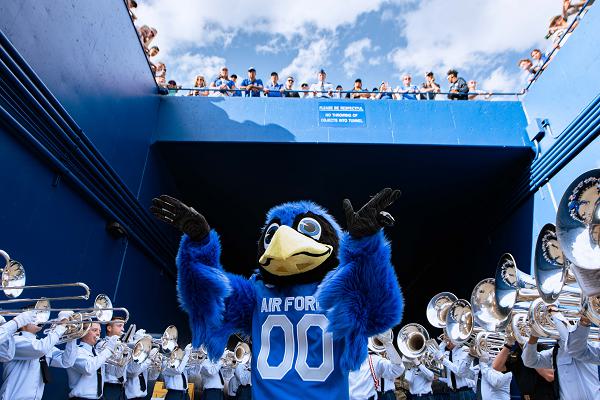
Colorado Springs, Colorado. (September 27, 2024): In this photo by Dylan Smith, the Air Force’s costumed mascot, “The Bird,” performs in the tunnel prior to a football game against San Jose State University at Falcon Stadium. The service chose the falcon, known for its speed, power, and agility. But the burning question is... “Does the Air Force Academy house and train live falcons?”
The Academy does indeed have an aviary of falcons who are maintained by twelve cadet falconers chosen from each new class to replace graduating seniors. The Academy first adopted live falcons in 1959, and they have performed at public events and football games ever since.
Many cadet handlers have little or no experience with birds before coming to the Academy, so it is vital they receive proper instruction. Cadets must learn to successfully train and safely maintain the physical health of the birds. Falconry candidates undergo a weekslong tryout process that includes a raptor licensing exam on biology, feeding habits, and health care of birds of prey.
The new falconers begin training in February each year and their duties include daily checks of each bird’s health and condition, feeding/training sessions during which the birds are fed a measured ration of meat, and the frequent cleaning of cages and maintenance of equipment. Cadets work with birds ranging in age from two to fourteen years. Each variety has distinct traits and characteristics that make them unique. Hybrids are used because they combine size and flying ability. The birds are flown throughout the year, weather permitting, to keep them in top condition.
The Air Force Academy currently has twelve performing birds of prey that delight crowds at events around the country.


